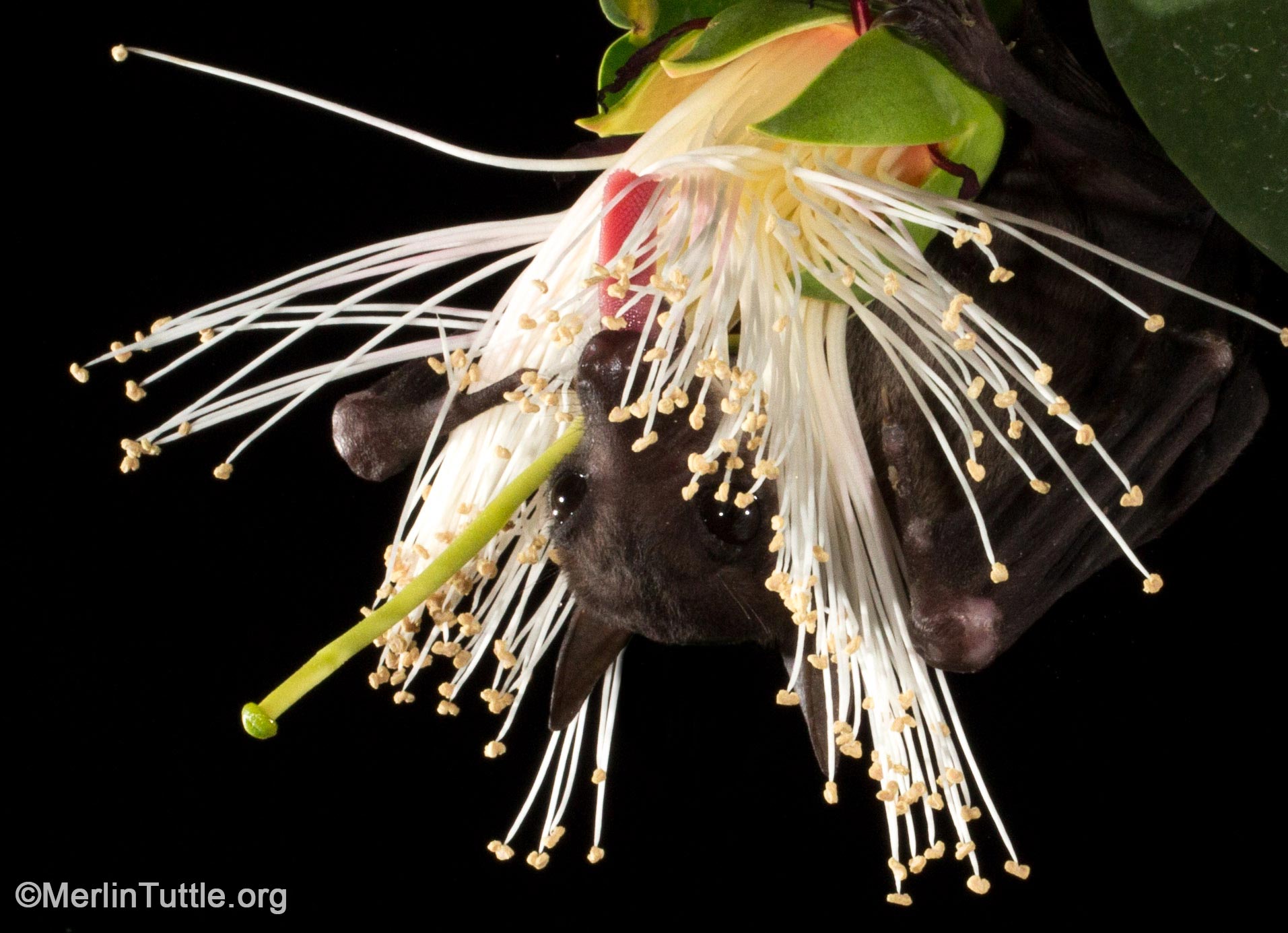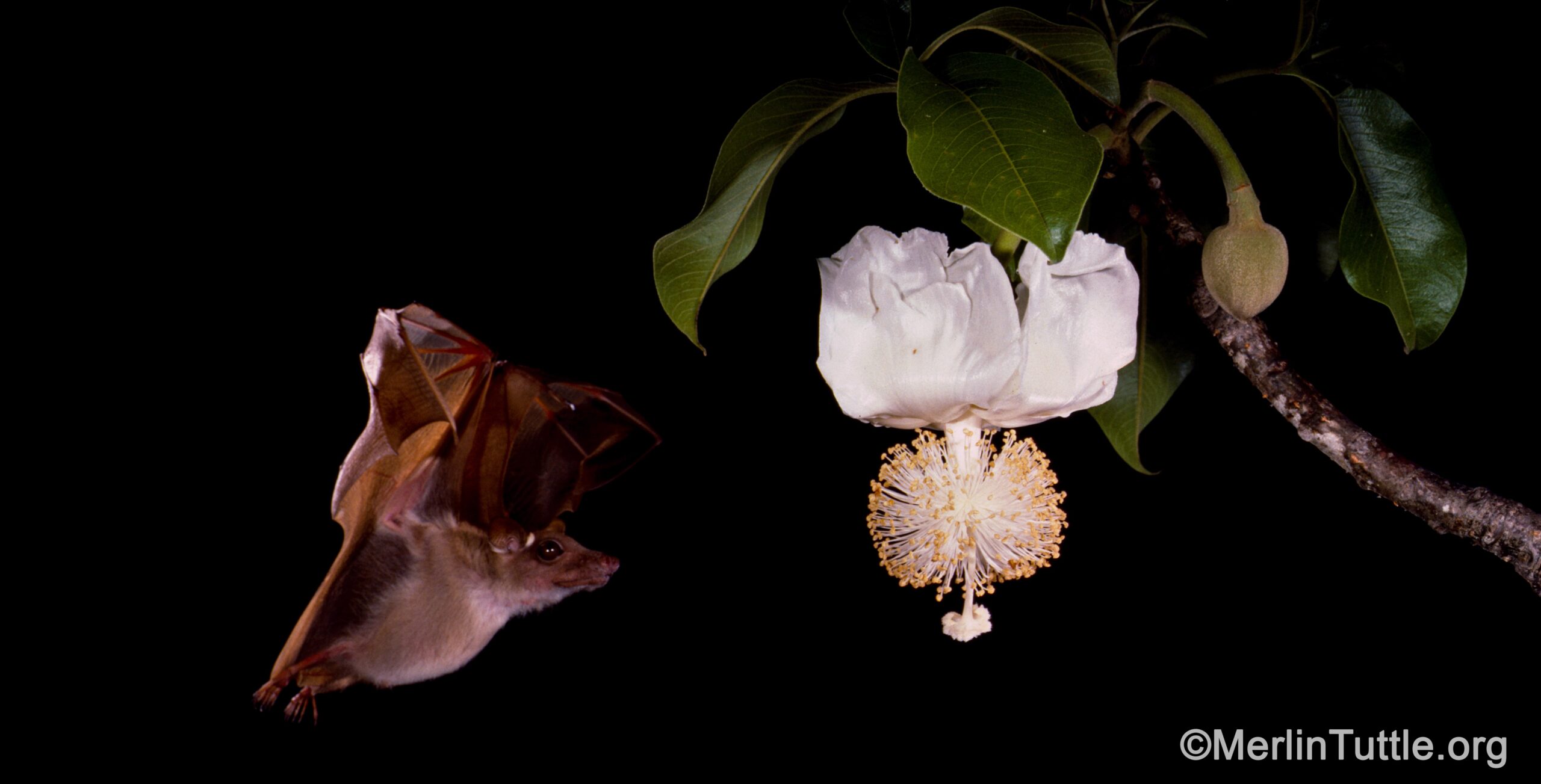The Costs of Bat Decline
Can we afford to lose bats? A recent study by Eyal Frank of the University of Chicago reveals that the dramatic decline in U.S. bat
When most people think of pollinators, fluffy bees and beautiful butterflies fluttering around in the afternoon sun, often come to mind. However, one of the most overlooked pollinators has whole industries relying on them to pollinate their crops during the night shift – bats.


Pollinating bats are often drawn to flowers that are not brightly colored – usually white or pale flowers. The nectar of these flowers attracts bats and while they’re enjoying a sweet, nourishing snack, they’re also getting covered in pollen to spread to the next flower they head to for more nourishment. Bats also carry more pollen farther than any other pollinators. So, next time you’re eating a banana or adding some agave to sweeten your tea, be sure to thank a bat for their hard work.
You can find these bat pollination pictures and more in our photo gallery. Our photos are available for you to use and share, thanks to our generous members and supporters. Please feel free to purchase and share to educate others on the importance of bats.
And… Click here to read about our work with National Geographic to help educate people on bat pollination!
Want to show bats some additional love? Shop some MTBC merch and support our organization:
Katie Netherton is the Communications Coordinator at Merlin Tuttle’s Bat Conservation.
Love our content? Support us by sharing it!
Can we afford to lose bats? A recent study by Eyal Frank of the University of Chicago reveals that the dramatic decline in U.S. bat
Bats are among the most fascinating yet misunderstood creatures in the natural world, and for many conservationists, a single experience can ignite a lifelong passion
Many bat conservationists know that Kasanka National Park in Zambia is an exceptional place for bats, but it is also the place that sparked my
The Kasanka Trust is a non-profit charitable institution, which secures the future of biodiversity in Kasanka National Park in Zambia. They welcome internships for students
2024 © Merlin Tuttle’s Bat Conservation. All rights reserved.
Madelline Mathis has a degree in environmental studies from Rollins College and a passion for wildlife conservation. She is an outstanding nature photographer who has worked extensively with Merlin and other MTBC staff studying and photographing bats in Mozambique, Cuba, Costa Rica, and Texas. Following college graduation, she was employed as an environmental specialist for the Florida Department of Environmental Protection. She subsequently founded the Florida chapter of the International DarkSky Association and currently serves on the board of DarkSky Texas. She also serves on the board of Houston Wilderness and was appointed to the Austin Water Resource Community Planning Task Force.
Michael Lazari Karapetian has over twenty years of investment management experience. He has a degree in business management, is a certified NBA agent, and gained early experience as a money manager for the Bank of America where he established model portfolios for high-net-worth clients. In 2003 he founded Lazari Capital Management, Inc. and Lazari Asset Management, Inc. He is President and CIO of both and manages over a half a billion in assets. In his personal time he champions philanthropic causes. He serves on the board of Moravian College and has a strong affinity for wildlife, both funding and volunteering on behalf of endangered species.